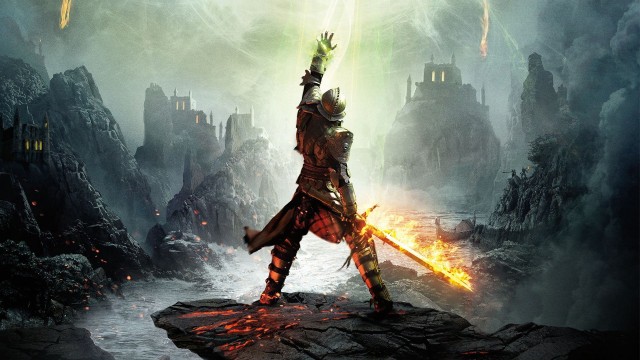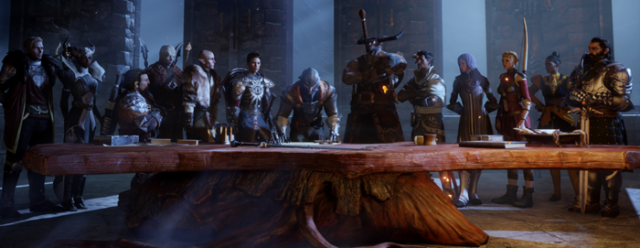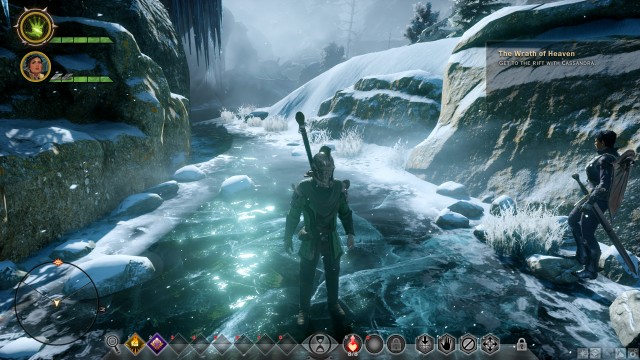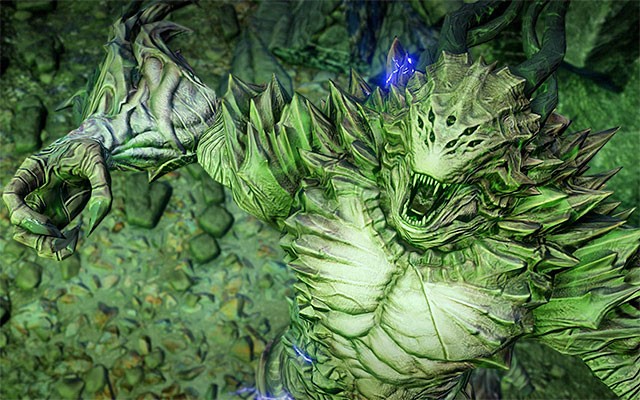Dragon Age: Inquisition (DAI) is the latest installment of Bioware’s Dragon Age Series. Like its predecessors, DAI is a 3D role-playing game (RPG) set in the fictional world of Thedas. The player takes on the role of the story’s protagonist who eventually comes to lead an organization called the Inquisition which aims to restore order to the world. The Inquisition is made up of various well-written characters, with 9 of them being potential party members whose skillsets and gear are also customisable like the protagonist’s. Select expanses of Thedas are also open for the player to explore, fight foes and complete quests within, with more unlocked as the player progresses. Combat is mostly action-orientated, with the player controlling a party member while the others will behave according to their individual AI.
Game’s Homepage: http://www.dragonage.com/#!/en_US/home
Gameplay Video, by ChristopherOdd and also used in this analysis:
Part 1: https://www.youtube.com/watch?v=VjKh8QzYtaQ
Part 2: https://www.youtube.com/watch?v=9BFhWN2CnRM
In this assignment, I chose to analyse in particular the very first stage of the game between my playthrough and that of ChristopherOdd’s “Let’s Play” Video. Being a game being focused around a main plot, I had found that the experience could vary greatly when played at different points of the plot, especially the emotional responses to events of the story and difficulty differences. Thus, fixing the part of the game to analyse would be easier to compare and contrast directly.
Elemental Tetrad
Story
I find Story being the most prominent out of the four elements, especially with the very detailed lore of the world. The game began with the showing of cutscenes of the protagonist’s plight. From the first few conversations the protagonist has with the character Cassandra, the ongoing chaotic situation of having a giant green hole in the sky was set up before me. Though, few things that happen in this first stage elicit much response from me as a returning player. For ChristopherOdd, being the first time he is playing the game, was actually surprised at various points of the stage such as the bridge collapsing when he tries to cross it. The dialogue system also allows him to learn more about the situation and characters around the protagonist to grasp a better understanding of the story.
Aesthetics
It’s unfortunate that with my low-end PC, I am not able to fully enjoy the 3D environments. Nonetheless, the great voice acting is able to bring forward the personalities of each character. Music tries to play up the ongoing doom-on-the-world tension. From the sound effects, I could even tell whether or not my attacks are connecting with the moving targets.
Aesthetics also aid ChristopherOdd in picking up the mechanics. For example, from the metallic bars above Cassandra’s health bar, he deduced that she has some sort of armour on her in which he was quite correct even though he did not know that they represent her “guard”, a commodity which takes damage in place of her health.
Mechanics
Combat is DAI is mostly action-based. Mechanics are also flexible enough to allow us to take different approaches to combat. For example, in the same fight, I did take out the weaker ranged enemies first before focusing on the enemies with more health while ChristopherOdd usually tries to take out the closet target.
I’ve found that Mechanics meets Story particularly in Rift fights. These green tears in the Veil could be disrupted by the protagonist in combat to deal damage to surrounding demons, something unique to the main character since he had woken to find a strange green mark on his hand at the start of the game.
Technology
Though not very apparent, it appears to be the glue in DAI’s well-meshed Elemental Tetrad. My favourite feature of the game is the characters. Aesthetics, of both animation and voice acting, and writing are meshed through technology to make them feel very much like real people. It’s also Technology that allows us to move our character freely and interact with objects, choose dialogue option and make visuals and sound play through our screen and speakers.
Lens of Essential Experience
Although I was replaying the tutorial stage, I was still able to have an exciting on-the-edge boss fight by playing in the most difficult “Nightmare” mode. The increased difficulty challenges me to employ better tactics in fight as I could easily run into crisis points in combat and possibly lose. As this was not my first playthrough, I was rather impatient when cutscenes are going on as they are not new to me. Nonetheless, I still find myself being amused by the back and forth responses between characters, especially the witty remarks of Varric Thetras. The AI, models and voice contribute to life-likeness of the characters, reinforcing the illusion of my protagonist fighting alongside other people, and not mere pawns I can control as the player.
This tutorial stage seems to be able to guide ChristopherOdd smoothly into the controls and rules of the game through presenting popup explanations of combat skills, items and control as he encounters them. The game also makes an effort to instruct him through the party members, such as telling the protagonist to “use the mark”, which cues him to interact with the Rift using his character. Such efforts allow instructions to be presented in a “natural” way in the game’s setting and interrupts immersion less than the instructional popups.
Lens of Curiosity
While playing the game, I tend to look around a lot while hitting the search button repeatedly. This is likely because of the question of “Is there loot nearby?” in my head. The more I find, the more I am convinced that there are more lying around somewhere, especially when there seem to be the trend of loot waiting to be found in dead ends and corners off the main path of the stage. Similarly ChristopherOdd tends to search the area for loot thoroughly, probably due to the same question.
As a first time player, ChristopherOdd also appears to be curious and wanting to know more about where the stage and story is headed. The game begins with the cataclysmic event of a Breach being opened in the sky but there are many unanswered questions of how the protagonist ends up with the special ability to influence Rifts. The voices heard at the Temple of Sacred Ashes and the vision seen later also makes him wonder “What is going on?” probably not just about the vision itself, but also to the story behind the explosion that created the Breach.
Lens of Endogenous Value
Both of us collect as much loot as possible from this stage probably for similar reasons. We know gold would allow us to buy things we would want in future parts of the game, a parallel to real life money. Equipment we find that are better than what we are currently wearing would help us towards combating foes we meet. Combat is a major part of the game and if we are to complete it, we would have to win against enemies we come across. This give importance to developing our characters’ combat prowess and thus, attaching importance to good equipment. Similarily, we learn from this first stage that levels give ability points which are exchanged for usable skills and passive boosts for combat. Although experience points in this first stage are limited, we come to know that they are important as they lead to levels and thus, ability points.
Lens of Problem Solving
At the beginning of the stage, we are given the quest to “Get to the Rift with Cassandra”. This is the first of many problems disguised as a task and quest. Getting to the Rift means needing to overcome the foes encountered on the path to the Rift. Similar quests and problems make or guide us to the end of the stage to the Pride Demon boss.
A different problem was presented when fighting the boss. We would have to disrupt the nearby Rift in order to remove the shield on the Pride Demon boss that makes it immune to attacks. This slight change in the rules and the increased power of the opponent makes the problem of defeating the boss more challenging, creating the experience of the climaxing fight of the stage.
Conclusion
The experience of the first playthrough of this first stage of the game could be quite different from that of subsequent replay. Although my curiosity for what-happens-next is dimmer than ChristopherOdd’s, the wanting of valuable loot and the curiosity of what I can find had me exploring the stage as thorough as I could. Although I was already versed in the game and impatiently skipping through tutorials, I could still have fun through the increased difficulty as it challenges me to apply what I already know to overcome the problems. On top of it all, characters that I have grown fond of during my previous experiences of the game were present, no less well-presented and amusing as I remember them from previous plays.




